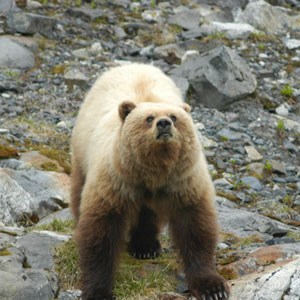
NPS Photo
Environments are constantly changing, and animals can often adapt to these changes. In addition, management actions in parks taken to protect one species may have an effect on another species. For example:
The restoration of wolves at Yellowstone National Park has required grizzly bears to adapt to the presence of a new top predator that had been absent for over sixty years. Grizzly bears, black bears, and gray wolves historically coexisted in the area, and researchers and managers were confident that restoring the gray wolf population would have little, if any, effect on grizzly and black bear populations. Before wolves, the only elk carrion available to bears and other scavengers came when elk were killed by harsh weather events. Now, wolf-killed elk have become a more evenly reliable food source throughout the winter. Grizzly bears are able to use their strength and size to actively move a wolf pack from its kill.
Climate change also is forcing animals to interact with each other in new ways. For example, as the sea ice melts, polar bears spend more time on land, which brings them into greater contact with brown bears. These animals may compete for the same food sources or they may adapt to new food sources. Such changes in food selection can result in large ecosystem changes as species adapted to be prey no longer have population control from predators, and other species suffer reduced populations due to additional predation. How will these animals adapt to these interactions and what new decisions will managers face?
In Grand Teton National Park, radio-telemetry collars on black bears and grizzly bears were used to study interactions between the two species. Researchers found that black bears that live in the same area as grizzly bears are more likely to forage during the day than black bears that live in areas outside of grizzly range.
Last updated: April 18, 2016
